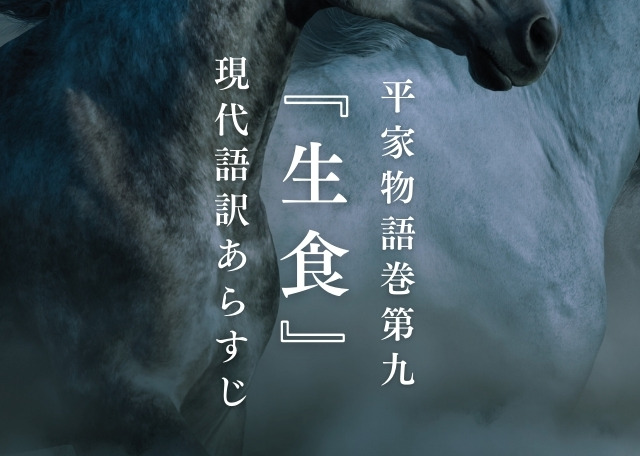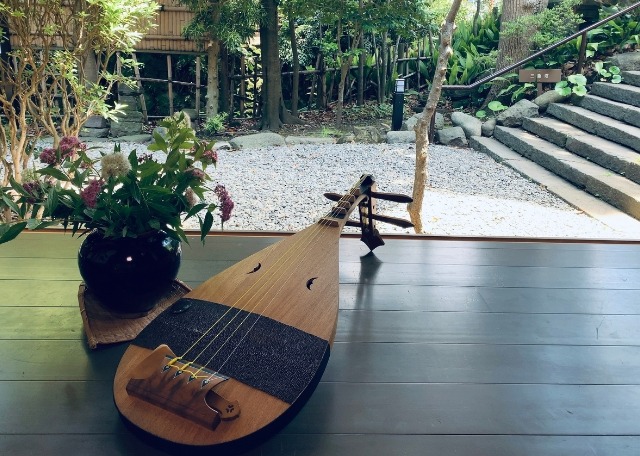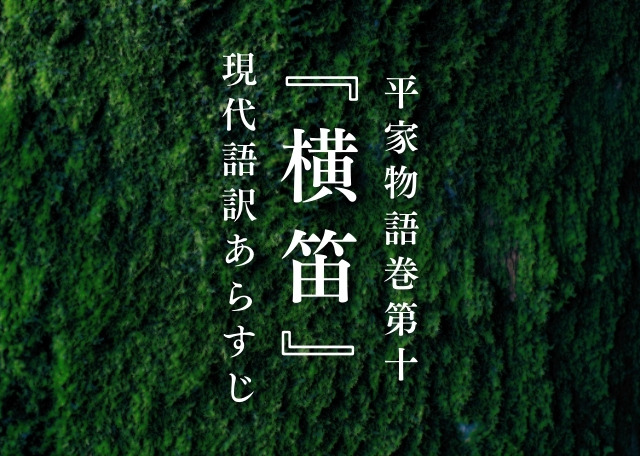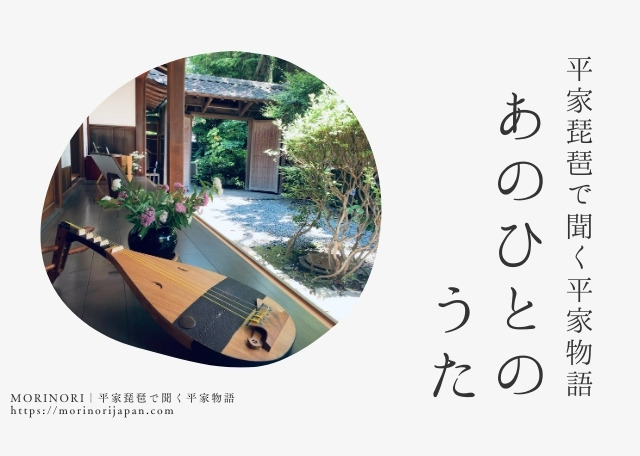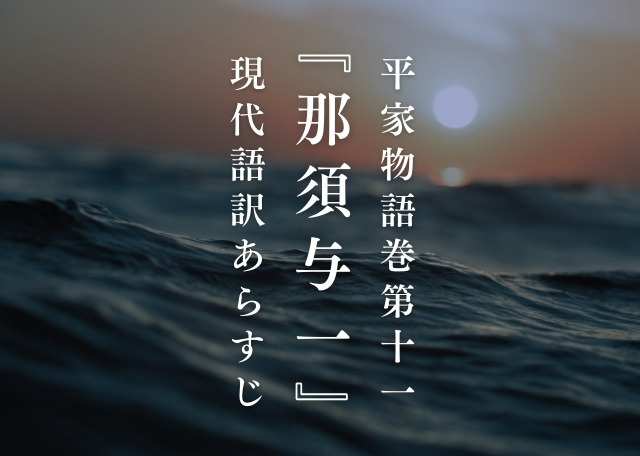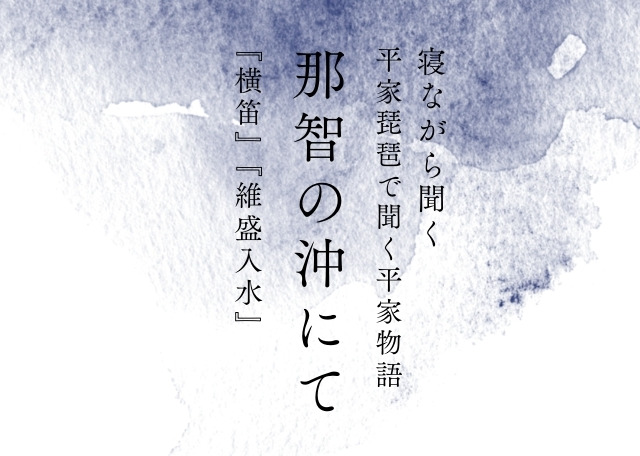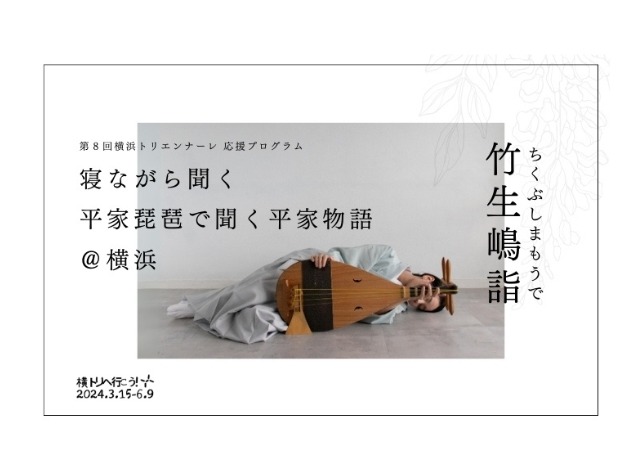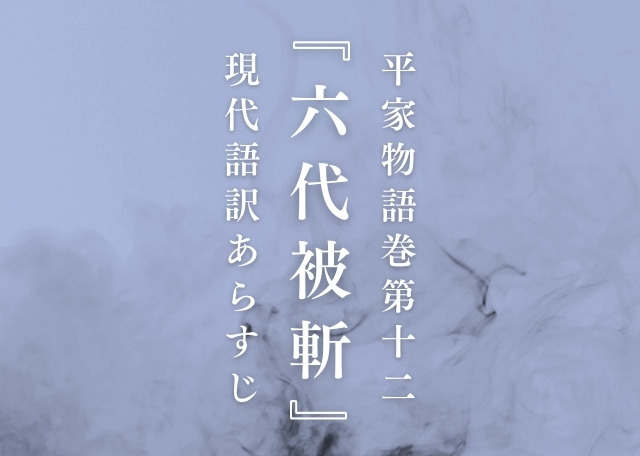Welcome to our site.
This is the website of MORINORI, which holds small Heikyoku (a performance of the Heike Monogatari accompanied by Heike biwa) concerts and lectures. On this page, we introduce a modern translation of the Heike Monogatari, Volume 9, “Ujigawanosenjin”. It’s not very good, but please take a look if you like.
▼For first-time visitors
https://morinorijapan.com/en/welcome
▼Program introduction
https://morinorijapan.com/en/performance-lineup
▼Listen to Heikyoku
https://morinorijapan.com/en/watch-the-sound/
▼Click here for a list of modern translations of the Tale of the Heike
The Tale of the Heike is performed at concerts and lectures, etc., in modern Japanese translation.
https://morinorijapan.com/en/category/tale-of-the-heike-en/
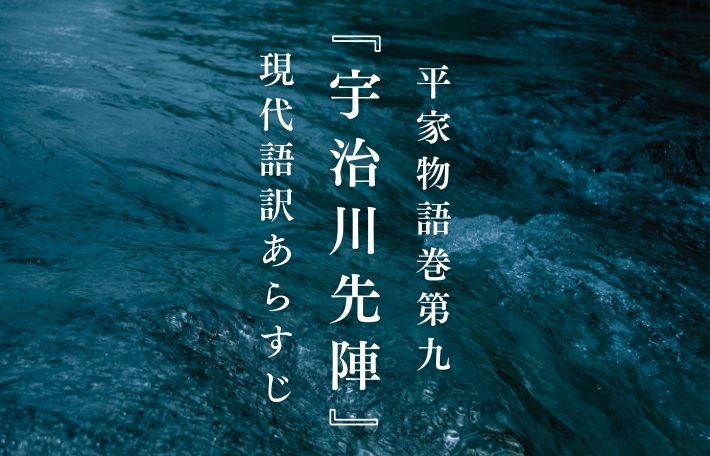
Tale of the Heike, Volume 9, “Ujigawanosenjin” – A brief summary
Sasaki Shiro was given a strong black horse called Ikezuki, while Kajiwara kagesue was given a dark, sturdy horse called Surusumi. The large army from the eastern provinces split into two groups and advanced, with Noriyori commanding the main force and Yoshitsune commanding the rear guard. At the Uji River, the bridge was pulled down, stakes and large ropes were strung across the riverbed, and the current was fast and white waves were rising, and Yoshitsune was considering a strategy to cross the river. Then, Hatakeyama Shigetada stepped forward and began making preparations to lead the Tanno party across the river.
Then, Sasaki Shiro and Kajiwara kagesue appeared, and they were secretly competing with each other to be the first to cross. Sasaki tells Kajiwara that the girth of his horse’s bellyband is loose, and while Kajiwara is readjusting it, Sasaki runs ahead. Kajiwara catches up with him and tells Sasaki to be careful of the large rope, but Sasaki cuts the rope with his sword and continues on, successfully crossing the Uji River. Meanwhile, Kajiwara was swept away by the current, but he finally managed to reach the shore. After that, Sasaki loudly declared that he had led the way, and Hatakeyama Shigetada also led over 500 horsemen across the river. In the end, the majority of the eastern army had crossed the river.
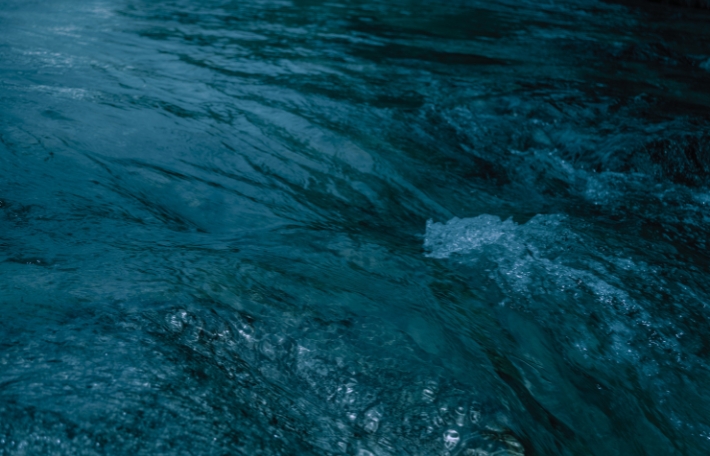
The Tale of the Heike, Volume 9, “Ujigawanosenjin” – Full modern translation
*This is a modern translation of the text taken from the Heikyoku score “Ujigawa”.
The horse that Sasaki Shiro was given was a black chestnut, and was a very strong and sturdy horse. It was so fierce that it would drive away other horses and people, and so it was named Ikezuki. It was known as a horse that was eight suns high. On the other hand, the horse that Kajiwara was given was also very strong and robust, and because it was jet black, it was named Surusumi. Both horses were excellent horses that were not inferior to any famous horses.
After that, a large army from the eastern provinces attacked in two groups, one attacking from the main gate and the other from the side gate. The general of the main army was Kamo no Noriyori, and the accompanying people included Takeda no Taro, Kagami Jiro, Ichijyo Jiro, Itagaki Saburo, Inage Saburo, Hatani Shiro, Kumagai Jiro, and Inomata Koremochi, and the force numbered over 35,000 horsemen. They took up positions at Nojishinohara in Omi Province.
The general commanding the forces attacking from the rear was Kuro-no-Miyatsuko Yoshitsune, and the people accompanying him included Yasuda Saburo, Ouchi Taro, Hatake Shojijiro, Kajiwara Genda, Sasaki Shiro, Kashiya Tota, Shibuya Umanosuke, and Hirayama Musashisuke. Sasaki Shiro, Kasuya Tota, Shibuya Umanosuke, and Hirayama Musashino, and their combined force reached over 25,000 horsemen, who advanced on the Uji Bridge via Iga Province.
The bridges at Uji and Seida had been pulled down, and piles of wood had been driven into the riverbed, with large ropes stretched across and barbed wire floating down the river. It was after the 20th of February, and the snow on the high peaks of Hira and the mountains of Shiga had melted, and the ice in the valleys had also melted, causing the river to swell. The white waves were surging violently, and the river was flowing fast, with the water swirling around like a great waterfall, making a roaring sound. By the time dawn broke, the river mist had risen so thickly that the horsehair and armor decorations were barely visible.
Kuro Yoshitsune stepped forward to the edge of the river and looked out over the surface, perhaps trying to assess the hearts of his soldiers, and was pondering whether they should head for the Yodo River’s mouth, go around the river on the inside, or wait for the water to recede. At that point, Hatakeyama Shigetada, a resident of Musashi Province, stepped forward and said, “The situation of this river was well considered in Kamakura. Even in the sea and rivers that we are familiar with on a daily basis, it is difficult to respond to sudden changes. This river is the end of the lake in Omi, so no matter how long you wait, the water will not recede. It is not possible to cross the bridge again and repair it. I heard that Ashikaga Matataro Tadanaga crossed the bridge at the age of 17 during the Jishou War, but he was no demon either.
Hatakeyama Shigetada was preparing to cross the river with his party of 500 men, when two horsemen appeared from the small island of Gontatsu in Byōdō-in. One was Kajiwara no Genda Kagesue, and the other was Sasaki Shiro Takatsuna. Although they were not seen by others, they were secretly competing with each other, and Kajiwara was slightly ahead of Sasaki. Seeing this, Sasaki said, “How is it, Kajiwara-dono? This river is the greatest river in the western provinces. Your bellyband looks loose, so you should tighten it up.” Hearing this, Kajiwara threw the reins over his horse’s mane, stepped through his left and right armor, and untied and retied his bellyband.
In the meantime, Sasaki quickly moved forward and jumped into the river. Kajiwara realized he had been tricked and quickly followed him into the river. Kajiwara warned him, “No matter how much you want to make a name for yourself, you mustn’t be in too much of a hurry. There should be a large rope at the bottom of the water, so be careful.” Sasaki thought he was right, and proceeded to cut away the large rope that was tied to the horse’s legs with his sword. The current of the Uji River was fast, but Sasaki was riding Ikezuki, a famous horse renowned throughout the land, and he crossed the river in a straight line and reached the other side. On the other hand, Kajiwara’s horse, Maboroshi, was swept diagonally down the middle of the river and came up on the bank from a long way down.
After that, Sasaki clenched his stirrups and shouted at the top of his voice, “I am Sasaki Shiro Takatsuna, the fourth son of Sasaki Saburo Hideyoshi, a resident of Omi Province and a descendant of Emperor Uda in the ninth generation. Anyone who thinks they are on the side of Kiso-dono and wants to join us, come and see me!” and he charged forward. Later, Hatakeyama Shigetada also led 500 or so horsemen into the river and crossed over. However, an arrow fired from the opposite bank by Yamada Jiro pierced deeply into the forehead of Hatakeyama’s horse, weakening it, and so Hatakeyama dismounted in the middle of the river, using his bow as a walking stick. The waves rushed up against the helmet, but Hatakeyama was unfazed and swam to the opposite bank, as if diving under the water.
As Hatakeyama Shigetada was about to climb out of the river, someone pulled him back from behind. When he asked who it was, the reply was “It’s Shigechika”. “Oh, it’s Ogushi?” said Hatakeyama, and the reply was “That’s right”. Ogushi Jiro Shigechika was Hatakeyama’s page. He said, “The current was too strong, and my horse was swept away in the middle of the river, and I reached this point somehow after exhausting all my strength,” and Hatakeyama said, “You are always being saved by Shigetada,” and grabbed Ogushi and threw him up onto the bank. As he was thrown up, he recovered and drew his sword and held it to his forehead, loudly announcing, “I am Musashinokuni no jūjin, Ōgushi Jirō Shigechika, and I have cut the Ujigawanosenjin in the vanguard on foot!” Hearing this, both friend and foe burst into laughter.
After that, Hatakeyama Shigetada changed horses and rode on, shouting as he went. Then, a warrior in a fish-patterned kariginu and scarlet-lacquered armor, riding a horse with a gold-trimmed saddle, came riding towards him. Hatakeyama shouted, “Who is it that is galloping over here? Identify yourself!” The warrior replied, “I am Shigetsuna Nagase, the deputy of the Hougan(Yoshitsune) of Kiso.” Hatakeyama said, “Then let’s celebrate the war god of today,” and he pushed his opponent to the ground at once, pulled him down, and pinned him to the front wheel of his saddle, twisting his neck so that he could not move at all, and then attached his head to the saddle of Honda Jiro.
This led to the soldiers defending the Uji Bridge fighting back here and there, and a defensive battle was waged, but as the large numbers of troops from the eastern provinces crossed the river one after another and attacked, they were unable to hold out, and retreated towards Kibata Mountain and Fushimi. At Seida, Inage Saburo Shigenari made a judgment and crossed the Tagami.
▼Click here for a list of modern translations of the Tale of the Heike
*The Tale of the Heike is performed at concerts and lectures, etc., in modern Japanese translation.
https://morinorijapan.com/category/tale-of-the-heike/
Thank you for reading this far.
I hope to see you somewhere someday.

